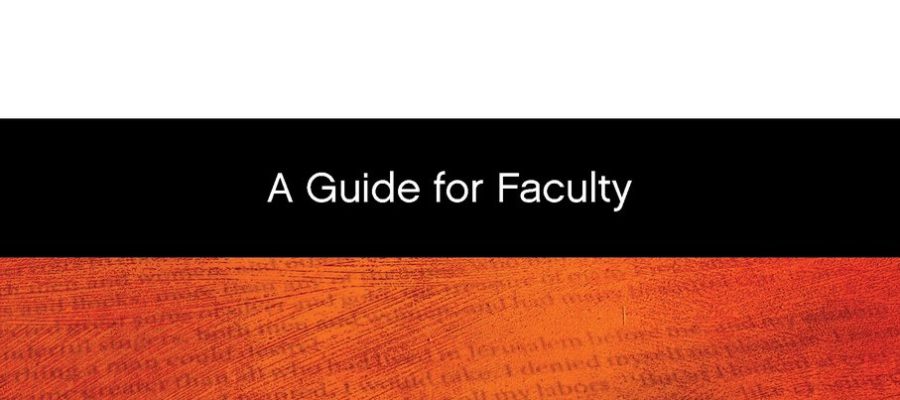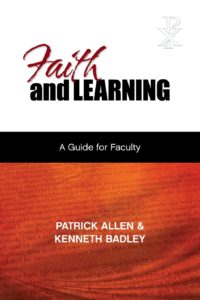Learning is a communal act.
“Learning is a communal act” is a statement constantly voiced to Allen’s and Badley’s students (259). University life should not be done alone. Silos should be merged, departments opened to other departments, conversations ongoing between disciplines, and books written to wed faith with learning. If nothing else, the last now exists. Faith and Learning is an important book for full consideration throughout the Christian academe.
 For Christians in Christian universities faith integration “is not a piece; it is the frame in which all the other pieces fit” (162). Allen and Badley raise the important biblical connectives between “words and deeds” (chapter eight). The two must be synthesized. Theory and practice must come together. Institutional missions, assessments, teaching, mentoring, and faculty evaluations should all be woven through biblical thinking. Sample tables (166-67) might give first steps for those interested in constructing principled, practiced connections. Bold statements pointing to “awe” in disciplines that discover (111, 132-33) serve a culture grasping for points of “wonder.”
For Christians in Christian universities faith integration “is not a piece; it is the frame in which all the other pieces fit” (162). Allen and Badley raise the important biblical connectives between “words and deeds” (chapter eight). The two must be synthesized. Theory and practice must come together. Institutional missions, assessments, teaching, mentoring, and faculty evaluations should all be woven through biblical thinking. Sample tables (166-67) might give first steps for those interested in constructing principled, practiced connections. Bold statements pointing to “awe” in disciplines that discover (111, 132-33) serve a culture grasping for points of “wonder.”
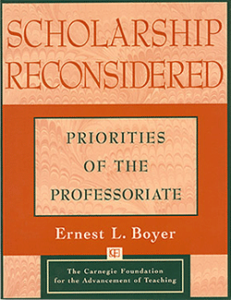 Allen and Badley demystify what some consider to be a difficult subject to entertain. Chapters’ one through three create definitions, historical connections, institutional links, and specific practices. Ernest Boyer and his model of scholarship is explained and applied in chapters’ four to seven. Cutting through the myriad of interpretive voices, the authors clarify, consolidate, and coalesce Boyer’s foundational work Scholarship Reconsidered (Princeton, Carnegie, 1990) showing how his principles can continue to be practiced. Chapter eight focuses on the assessment of faith-learning integration across the academic horizon. Chapter nine gives practical, personal strategies to help Christian college personnel consider how faith-learning integration should be engaged. The concluding chapter summarizes the book giving the authors’ challenge to change systems and routines from curricula development to classroom instruction.
Allen and Badley demystify what some consider to be a difficult subject to entertain. Chapters’ one through three create definitions, historical connections, institutional links, and specific practices. Ernest Boyer and his model of scholarship is explained and applied in chapters’ four to seven. Cutting through the myriad of interpretive voices, the authors clarify, consolidate, and coalesce Boyer’s foundational work Scholarship Reconsidered (Princeton, Carnegie, 1990) showing how his principles can continue to be practiced. Chapter eight focuses on the assessment of faith-learning integration across the academic horizon. Chapter nine gives practical, personal strategies to help Christian college personnel consider how faith-learning integration should be engaged. The concluding chapter summarizes the book giving the authors’ challenge to change systems and routines from curricula development to classroom instruction.
 “Scholarship of engagement” is intended to “re-energize the university for the common good” (137). The work of Ernest Boyer sets the standard for Allen and Badley’s guide providing both backdrop and performance for their ideas. Knighted a “wisdom keeper” (86) Boyer’s concerns for teaching, research, service, and application are the same as those in Christian arenas. So often in discussions of faith-learning integration the craft of teaching is left out; not here. Chapter five refers to teaching as an act of scholarship. The authors surmise that teaching and learning cannot be referenced without faith (109-16). Just as with faith-learning, there is good reason to hyphenate teaching-learning. The process of education should be a cross current of thinking enlivened by the ideas of everyone involved. Navigating disciplinary divides, the authors further state, “If we do not respect the other cultures on our campuses, we will not be able to think with wisdom or treat others with grace and dignity” (123). Interdisciplinary approaches would be a welcome first step toward unification over division (127). Praxis is crucial to apply “knowledge to real-world problems” no matter the subject area (137). Hearing from practiced university leaders (142-45) offering specific steps toward institutional transitions is a pleasure. A well-worn shop word like “collaboration” can be easily used but poorly enacted unless Boyer’s principles are central.
“Scholarship of engagement” is intended to “re-energize the university for the common good” (137). The work of Ernest Boyer sets the standard for Allen and Badley’s guide providing both backdrop and performance for their ideas. Knighted a “wisdom keeper” (86) Boyer’s concerns for teaching, research, service, and application are the same as those in Christian arenas. So often in discussions of faith-learning integration the craft of teaching is left out; not here. Chapter five refers to teaching as an act of scholarship. The authors surmise that teaching and learning cannot be referenced without faith (109-16). Just as with faith-learning, there is good reason to hyphenate teaching-learning. The process of education should be a cross current of thinking enlivened by the ideas of everyone involved. Navigating disciplinary divides, the authors further state, “If we do not respect the other cultures on our campuses, we will not be able to think with wisdom or treat others with grace and dignity” (123). Interdisciplinary approaches would be a welcome first step toward unification over division (127). Praxis is crucial to apply “knowledge to real-world problems” no matter the subject area (137). Hearing from practiced university leaders (142-45) offering specific steps toward institutional transitions is a pleasure. A well-worn shop word like “collaboration” can be easily used but poorly enacted unless Boyer’s principles are central.
 Unlike other books of serious consideration, the endnotes are not to be missed for comedic sidebars. The authors had a good time ad-libbing, placing tongue firmly in cheek, making the reader laugh out loud. Too, the notes provide a tremendous amount of fodder for further consideration noting books not often mentioned elsewhere. Bennett’s Academic Life: Hospitality, Ethics, and Spirituality (Boston: Anker, 2003) or Hassel’s City of Wisdom: A Christian Vision of the American University (Chicago: Loyola University Press, 1983) are reflective learning tools that ought not be missed. Authors like Ludwig Wittgenstein, Jose Ortega y Gassett, or Elton Trueblood can be revisited because of the authors’ mention. For those who may not know names supporting seminal work in the faith-learning integration field such as Gaebelein, Holmes, Plantinga, or Wolterstorff, endnotes point the way toward encounter.
Unlike other books of serious consideration, the endnotes are not to be missed for comedic sidebars. The authors had a good time ad-libbing, placing tongue firmly in cheek, making the reader laugh out loud. Too, the notes provide a tremendous amount of fodder for further consideration noting books not often mentioned elsewhere. Bennett’s Academic Life: Hospitality, Ethics, and Spirituality (Boston: Anker, 2003) or Hassel’s City of Wisdom: A Christian Vision of the American University (Chicago: Loyola University Press, 1983) are reflective learning tools that ought not be missed. Authors like Ludwig Wittgenstein, Jose Ortega y Gassett, or Elton Trueblood can be revisited because of the authors’ mention. For those who may not know names supporting seminal work in the faith-learning integration field such as Gaebelein, Holmes, Plantinga, or Wolterstorff, endnotes point the way toward encounter.
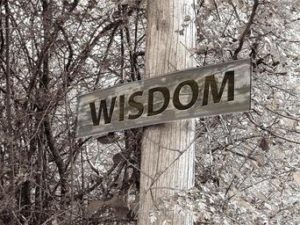 Chapter ten finds this reviewer’s copy littered with exclamation marks. If Christian universities are in need of ideas for implementation of faith-learning integration, they need look no further. Individual and institutional concerns are addressed up front. Inductive to deductive, local then global, institution-specific to institution-wide strategies are demarcated. Appropriation of directives should be applied “unapologetically” (208). Focus on biblical wisdom moves instruction toward affective goals (211). The five “e’s” connecting the wisdom community to the classroom are both obvious and often unpracticed (212-15). “Cultural intelligence” cannot be missed, focused as it is on deep learning (216). The vocation of being a student – as is that of a professor (110) – is celebrated (219). Hospitality, humility, and grace are key attributes to be practiced in the hallowed halls of any institution (220-23). Faith-learning traditions (222) are explained then linked to covenantal implications with the primary focus on faculty hires (225). It should come as no news flash, but the wedding of faith with learning demands maintenance (226) just as any covenantal relationship should.
Chapter ten finds this reviewer’s copy littered with exclamation marks. If Christian universities are in need of ideas for implementation of faith-learning integration, they need look no further. Individual and institutional concerns are addressed up front. Inductive to deductive, local then global, institution-specific to institution-wide strategies are demarcated. Appropriation of directives should be applied “unapologetically” (208). Focus on biblical wisdom moves instruction toward affective goals (211). The five “e’s” connecting the wisdom community to the classroom are both obvious and often unpracticed (212-15). “Cultural intelligence” cannot be missed, focused as it is on deep learning (216). The vocation of being a student – as is that of a professor (110) – is celebrated (219). Hospitality, humility, and grace are key attributes to be practiced in the hallowed halls of any institution (220-23). Faith-learning traditions (222) are explained then linked to covenantal implications with the primary focus on faculty hires (225). It should come as no news flash, but the wedding of faith with learning demands maintenance (226) just as any covenantal relationship should.
 A few minor complaints may be raised which are quibbles in relation to the authors’ outstanding work. “Addition” (209) is a poor word choice to invest in discussion when the whole of the work has been to synthesize faith with learning. Within the specific context of institutions committed to research, perhaps a better way to consider qualitative research is as a natural outcome rather than an add-on. Some questions concerning “truth” (223) seem to open the door to individualized interpretation away from Scripture as authoritative. Chapter nine reads like a how-to for academic writers. One could argue that for a book on faith-learning integration, writing stratagems seem out of place. Chapter nine might have been better placed in an appendix. But if faith-learning integration is to be accomplished, ideas come in the form of words, eventually hitting a digital screen.
A few minor complaints may be raised which are quibbles in relation to the authors’ outstanding work. “Addition” (209) is a poor word choice to invest in discussion when the whole of the work has been to synthesize faith with learning. Within the specific context of institutions committed to research, perhaps a better way to consider qualitative research is as a natural outcome rather than an add-on. Some questions concerning “truth” (223) seem to open the door to individualized interpretation away from Scripture as authoritative. Chapter nine reads like a how-to for academic writers. One could argue that for a book on faith-learning integration, writing stratagems seem out of place. Chapter nine might have been better placed in an appendix. But if faith-learning integration is to be accomplished, ideas come in the form of words, eventually hitting a digital screen.
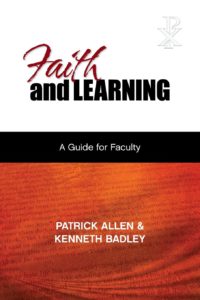 Minor objections notwithstanding the book is a necessary launch for Christian faith-learning integration. The conclusion of chapter seven (149-54) is really the introduction for Christian professors: the use of Spirit-given gifts for the betterment of students, colleagues, campuses, and communities. In their afterword (231-35), Allen and Badley turn their attention to the obvious but often forgotten need to remember macro and micro concerns. Administration (macro) bear responsibility for missional oversight. Professors (micro) bear responsibility for practice of mission in the classroom. Admitting faculty have lost the influence they once had, Allen and Badley maintain that teachers can have their voice heard in other ways. Throughout Faith and Learning the word “distinctive” is used to point toward a Christian college perspective. As the authors warn without a distinctiveness a Christian institution “can begin to look and act like every other” (235). The impetus for the work of faith-learning integration gives reason for who Christian educators say they are and for Whom they do their work.
Minor objections notwithstanding the book is a necessary launch for Christian faith-learning integration. The conclusion of chapter seven (149-54) is really the introduction for Christian professors: the use of Spirit-given gifts for the betterment of students, colleagues, campuses, and communities. In their afterword (231-35), Allen and Badley turn their attention to the obvious but often forgotten need to remember macro and micro concerns. Administration (macro) bear responsibility for missional oversight. Professors (micro) bear responsibility for practice of mission in the classroom. Admitting faculty have lost the influence they once had, Allen and Badley maintain that teachers can have their voice heard in other ways. Throughout Faith and Learning the word “distinctive” is used to point toward a Christian college perspective. As the authors warn without a distinctiveness a Christian institution “can begin to look and act like every other” (235). The impetus for the work of faith-learning integration gives reason for who Christian educators say they are and for Whom they do their work.
 Mark has spent his academic life committed to faith-learning integration. Dr. Mark Eckel is content provider for Curriculum Trak (here), writing, speaking, and teaching on a Christian view of life and things. Dr. Mark Eckel is President of The Comenius Institute (website), spends time with Christian young people in public university (1 minute video), hosts a weekly radio program with diverse groups of guests (1 minute video), and teaches weekly at his church (video). Picture credit: snappygoat.com
Mark has spent his academic life committed to faith-learning integration. Dr. Mark Eckel is content provider for Curriculum Trak (here), writing, speaking, and teaching on a Christian view of life and things. Dr. Mark Eckel is President of The Comenius Institute (website), spends time with Christian young people in public university (1 minute video), hosts a weekly radio program with diverse groups of guests (1 minute video), and teaches weekly at his church (video). Picture credit: snappygoat.com
The review of Faith and learning: A guide for faculty. By Patrick Allen & Kenneth Badley. Abilene, TX: Abilene Christian University Press. 2014 will appear in the spring, 2018 edition of Christian Education Journal.

